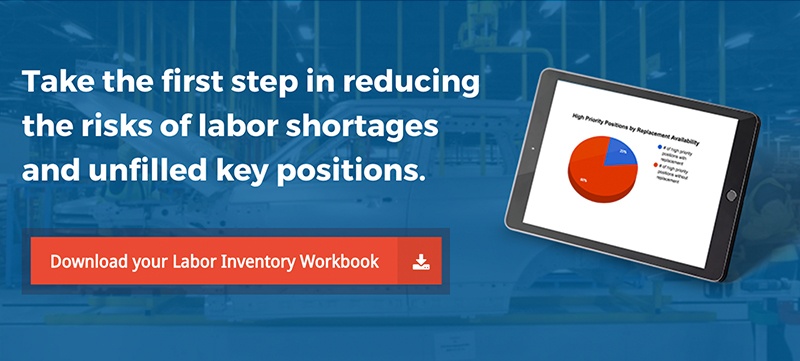You probably hear a lot about the skills gap in manufacturing. Perhaps it even directly affects your plant.
The statistics don't lie: 40 percent of global employers report a talent shortage, according to a ManpowerGroup survey. This is why companies are focusing more on training and development, as well as finding more reputable staffing firms.
In this article, let's take a look at the myths and realities surrounding the skills gap in manufacturing -- and what manufacturers can do to ensure staffing needs are always met.
Is the skills gap a myth?
Job openings at manufacturing companies don't actually stay open that long. A study done by MIT researchers shows that nearly 75 percent of manufacturing companies don't have trouble hiring skilled laborers, with the majority of positions being filled in under three months.
What's interesting is that this contrast with industry sentiment. Research conducted by Deloitte found that 83 percent of employers feel there is a moderate to serious shortage in the market for skilled production workers.
So, what's really going on here?
Given the ever-changing nature of jobs and the skills they require, the widespread sentiment that a skills gap exists could be because there is a disconnect between the demand and supply sides of labor. More transparency and communication between both sides can ensure the skills future workers are learning align with what employers need.
As Andrew Weaver, a professor and labor economist, writes, "misguided anxiety about skill gaps will lead us to ignore the need to improve coordination between workers and employers. It's this bad coordination--not low-quality workers--that presents the real challenge."
The realities of the skills gap
Though you could argue that the skills gap is a myth, it simply doesn't take away the fact that manufacturing companies are having trouble finding workers. Surveys have proven this repeatedly over the last decade.
According to the ManpowerGroup survey, employers can't fill positions for a variety of reasons, including:
- A lack of available applicants - 24%
- A lack of hard skills - 19%
- A lack of experience - 19%
- High salary request - 14%
- Lack of soft skills - 11%
So, what's the solution?
James Bessen, an economist at Boston University, notes, believes employers must change their hiring processes, as "new technologies frequently require specific new skills that schools don't teach and that labor markets don't supply." This necessitates that employers who use new technologies to "base hiring decisions not just on education, but also on the non-cognitive skills that allow some people to excel at learning on the job." In addition, pay structures should reward those willing to learn.
Filling the gap
A revamped hiring process and more effective training, scheduling, and use of technology can help fill the skills gap, but more has to be done. After all, even with those changes, companies may still face a variety of potential challenges if and when the skills gap is manifested as a labor shortage on the local level. If the shortage of labor is or will result in losses, companies need to consider different options, such as contingent staffing.
For instance, if you need more welders to finish a job, but there aren't enough available at the moment in your area, you may face the risk that the job won't get finished, and your customers will be left disappointed.
Additionally, unexpected challenges, from labor strikes to natural disasters, can make it necessary to be able to access skilled labor on short notice. You have to be prepared for this.
Simply put, you have a lot of contingencies to consider in order to make sure you're always properly staffed.
When the skills gap is real in the context of your locality, you need a way to solve a problem in the short-term. Access to a national pool of talent that can be deployed quickly along with on-site management is one solution. That's where specialized contingent staffing services like MADI come in. This way, no matter the circumstance, planned or unplanned, you can have the tools you need to solve any skills gap your company faces -- and continue to maintain and grow your operations.








Comments
Currently, there are no comments. Be the first to post one!